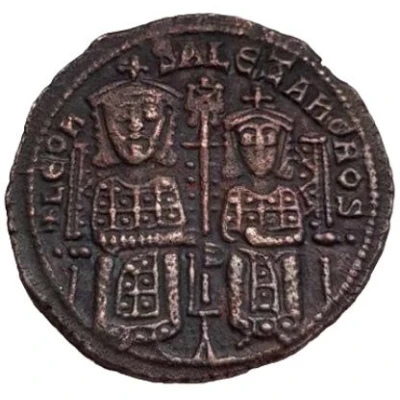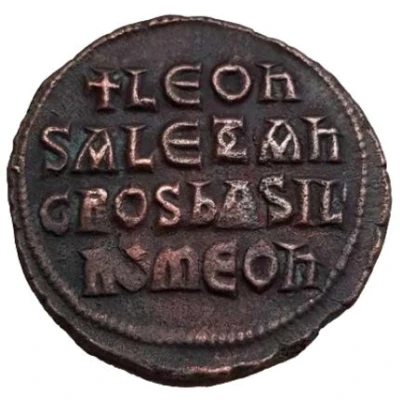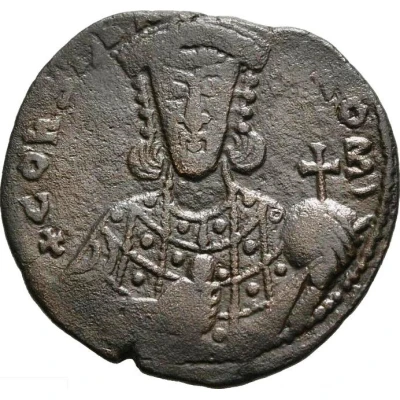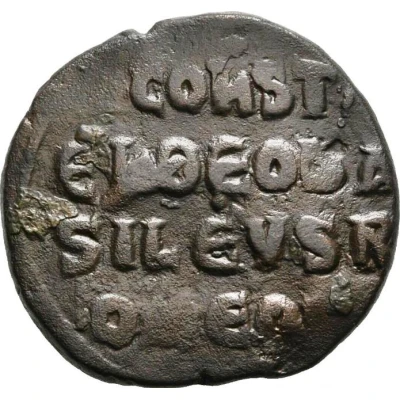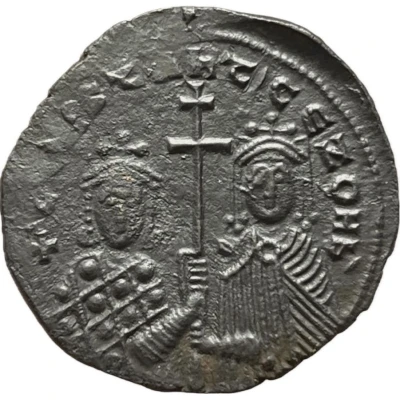
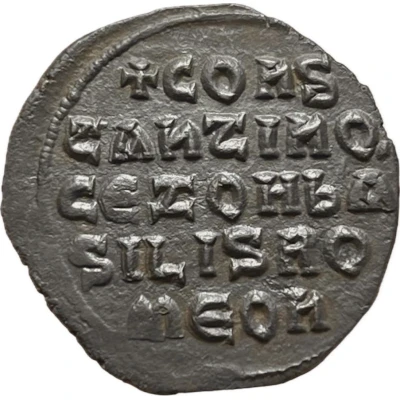

Follis - Constantine VII Constantinopolis ND
| Copper | 7 g | 25 mm |
| Issuer | Byzantine Empire (Byzantine states) |
|---|---|
| Emperor | Constantine VII Porphyrogennetos (913-959) |
| Type | Standard circulation coin |
| Years | 913-959 |
| Value | Follis (1⁄288) |
| Currency | Second Solidus Nomisma (720-1092) |
| Composition | Copper |
| Weight | 7 g |
| Diameter | 25 mm |
| Thickness | 1 mm |
| Shape | Round (irregular) |
| Technique | Hammered |
| Orientation | Coin alignment ↑↓ |
| Demonetized | Yes |
| Updated | 2024-10-04 |
| Numista | N#287021 |
|---|---|
| Rarity index | 81% |
Reverse
Legend in five lines.
Lettering:
+COnS
tAntInO'
CE ZOH bA
SILIS RO
mEOn
Edge
Plain
Interesting fact
The Follis coinage was introduced by Emperor Constantine VII in the early 10th century as a replacement for the previous coinage, the Nummi. The Follis was made of copper and had a distinctive large size, which made it easily recognizable and harder to counterfeit. The coin features an image of the emperor on one side and an image of Jesus Christ on the other, signifying the Byzantine Empire's strong Christian beliefs. The Follis coinage was used for over a century and went through several design changes during that time, making it a popular collector's item for numismatists today.
